http://economiacircularverde.com/que-es-la-economia-circular/ 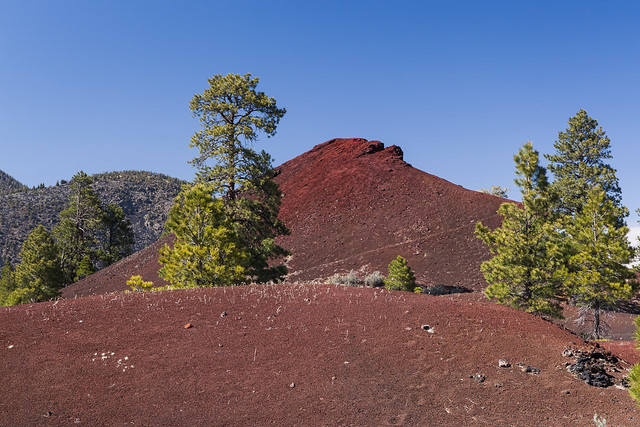
The cinder-strewn slope of Sunset Crater sweeps up a thousand feet into the blue sky.
Tramadol Order Online Canada Vincent Randall. He introduces himself in his native Apache language…my given adult Apache name means “Old Man Hunter.”
Randall, a Tonto Apache elder, has been coming here since the 1940s. He first came with his father in a 38 Chevy pickup… His people roamed the high country of this part of northern Arizona before they were confined to a tiny piece of land in the Verde Valley. But he says Sunset Crater remains a holy place:
“This is my people’s old homeland, you may have a piece of paper that gives you the deed which is a piece of paper that gives you the right to say you own this place, but in my heart, it’s still my land, it’s was given to us by God himself.
“One of the first things is when you enter a place like this you pray. Even today, I prayed this morning coming here.”
…from the transcript of Ken Burns’ The National Parks
Today Sunset Crater Volcano National Monument protects the Colorado Plateau’s most recent volcanic eruption.
It is the least-eroded cinder cone in the San Francisco Volcanic Field. The park is just a few miles north of Flagstaff, Arizona.
Part of what restricts us seeing things is that we have an expectation about what we will see, and we are actually perceptually restricted by that expectation. In a sense, expectation is the lost cousin of attention: both serve to reduce what we need to process of the world “out there.” Attention is the more charismatic member, packaged and sold more effectively, but expectation is also a crucial part of what we see. ~ Alexandra Horowitz, in The Art of Looking
Most of the lava in this region is black, bubbly basalt, called a’a.
A’a starts as hot lava that erupts from the Earth’s surface. Contact with the atmosphere or water immediately cools the hot lava and begins a rapid hardening process.
See the dark horizontal cave? It is a called a vesicle.
When flowing lava was still hot and fluid, gas bubbles formed. Once the lava flow surface cooled, then hardened, the gasses were trapped beneath the crust and formed a bubble. The lava hardened around the gases and a cave (or vesicle) was born.
“Much of the ground surface is covered by lava flows or deep volcanic cinder deposits; at first glance, the landscape still appears stark and inhospitable. But look again – within the dramatic geologic features are small islands of pine and aspen trees, desert shrubs, and wildflowers. These provide small but unique habitats for wildlife as well. Slowly but surely, life returns.”~ from Sunset Crater National Park publication
Cinder trail scattered with Ponderosa pine litter — nature’s litter – layers upon the ashy earth.
To walk this trail is to walk in a sacred space. Nature left to its own. Both the struggle and the survival.
Sunset Crater is one of the younger volcanoes in the contiguous United States and was named for its brilliantly colored frothy textures on the cone.
The last eruption took place sometime between about 1080 and 1150 AD, only 900 or so years ago.
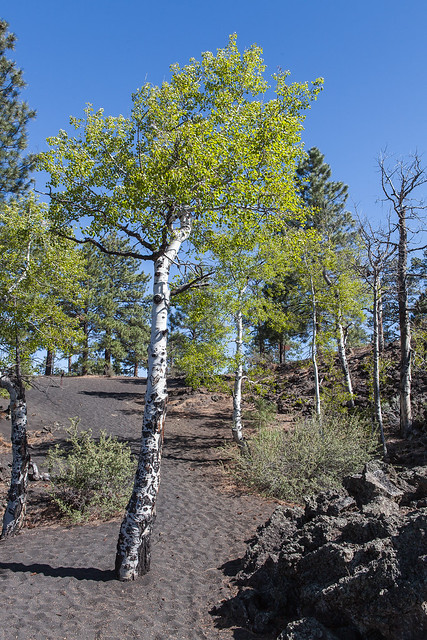
Searing basalt lava and hot gases erupted from Sunset Crater Volcano.
The cinders on the rim of the cinder cone, bathed in these vapors, chemically reacted with them to form iron oxide, sulfur compounds, and gypsum The result — red, yellow, and purple basalt cinders which still color the Sunset Crater Volcano’s summit.
Chemical interactions, gases, fire and heat, a crust of ash and a’a. And still, the trees and plants grow. Life.
That’s the history and geology.
Next post is Part II. A different take on tenacity.
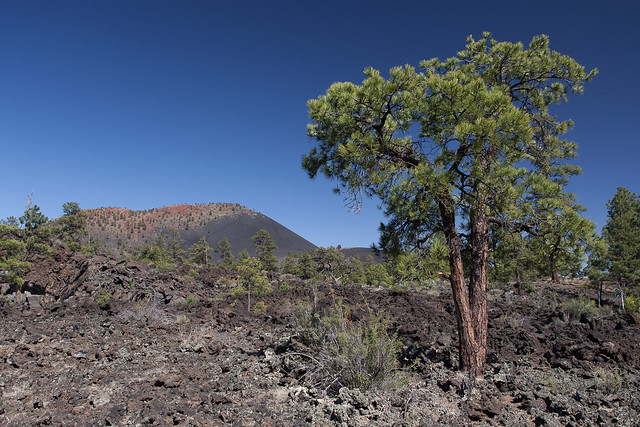
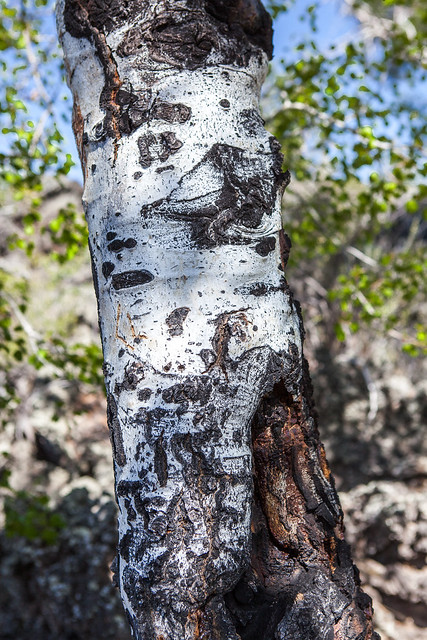
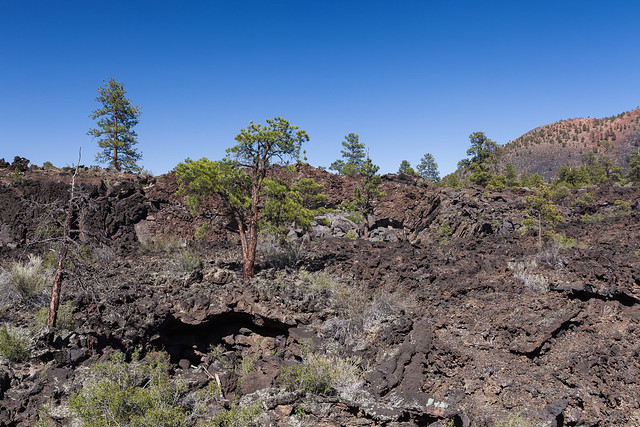
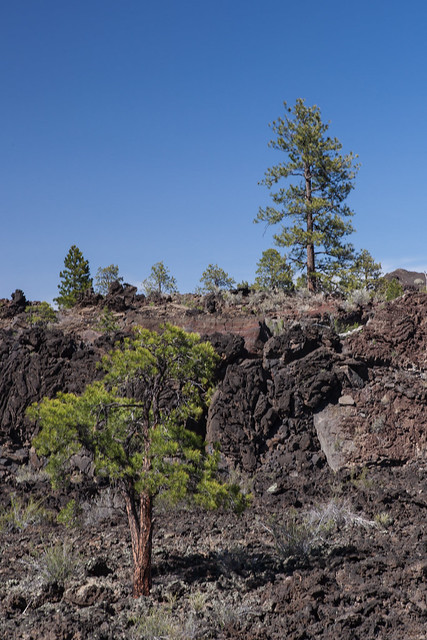
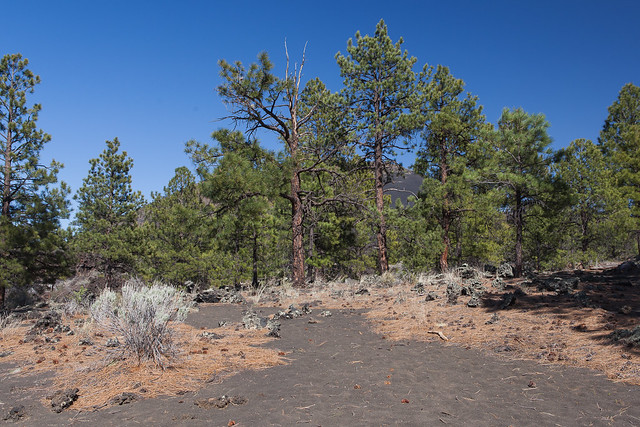
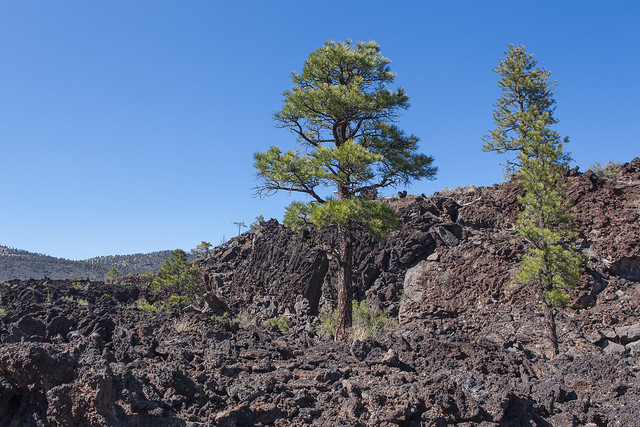







Pretty fascinating. I didn’t know much at all regarding volcanos. Your focus on the sacred as well as the space is welcome.
I particularly love the quotation from Horowitz about expectation. So very true! And pine litter . . . we forget that nature isn’t “neat and perfect”–but constantly piles up and strews discarded materials to be used in other ways. Lovely pictures.
This is such a sacred space. Your article allowed me to stand there again.
Absolutely fascinating. I, too, appreciate the sacred aspect of this story. My favorite photo is the last one – the aspen growing out of that dark taupe earth. Like it’s saying “I will not be denied.” Fabulous post, Bo.